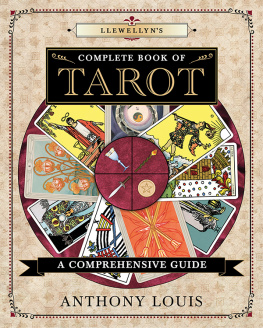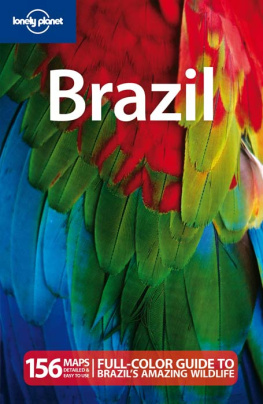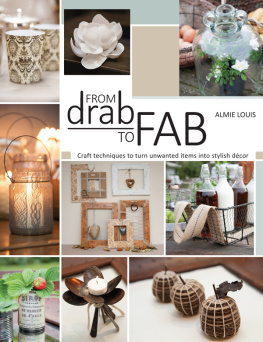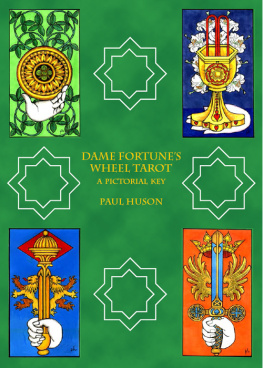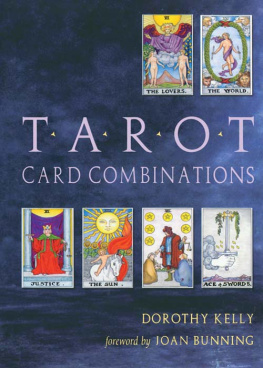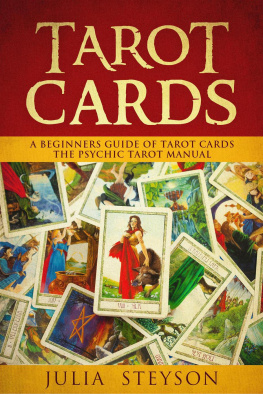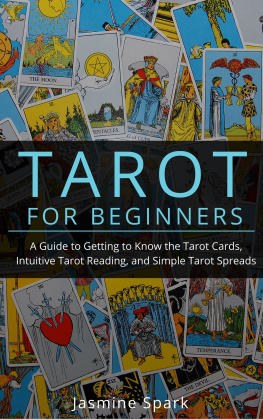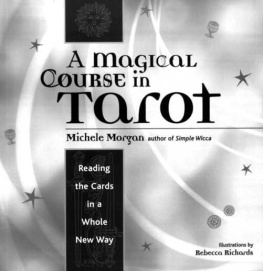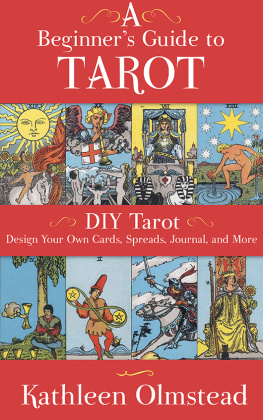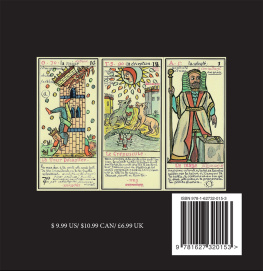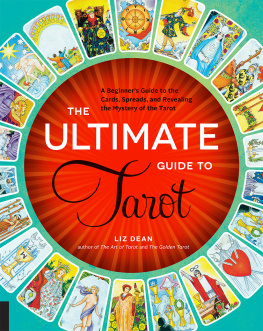Training Wheel Tarot:
Overcoming Beginners Anxiety
By Anthony Louis
Text copyright 2013 Anthony Louis
All Rights Reserved
Kindle Edition 1.0
October 21, 2013
The image of the velocipedist on the book cover is from the September 1868 edition of Le Cenaure magazine (Paris) and, being over 100 years old, is in the public domain.
<><><>
Other Books by the Author
Horary Astrology
Tarot Plain and Simple
The Art of Forecasting with Solar Returns
A Geomantic Tarot Spread (Kindle e-book)
The Annotated Raphaels Mundane Astrology (Kindle e-book)
Primary Directions in Astrology: A Primer (Kindle e-book)
The Journey of the Tarot Fool around the Zodiac (Kindle e-book)
Tarot Beyond the Basics (to be published by Llewellyn in 2014)
<><><>
The authors blog about astrology and tarot is at http://tonylouis.wordpress.com/
TABLE OF CONTENTS
INTRODUCTION
This e-book is intended for absolute beginners. If you are new to the tarot and would like to do a basic tarot reading as quickly as possible without expending a lot of effort, this book presents an easy way to get your feet wet. If you are an experienced tarot reader, there may be little new in these pages, except perhaps an opportunity to glimpse the simple and direct approach the author takes to doing a tarot reading when you are but a novice at this art. Just remember that beginners have to start somewhere. Like a child first learning to ride a bicycle, a newbie tarot reader may need training wheels at the start.
There is evidence that centuries ago decks of cards were used to tell fortunes, not by interpreting the cards themselves, but rather by using the cards to select pre-written texts in a book of predictions . The method presented here is inspired by this ancient technique. It will allow beginning tarot readers to consult the tarot without anxiety, hence the title Training Wheel Tarot: Overcoming Beginners Anxiety . My hope is that once the reader experiences the fun and beauty of the tarot in this playful and effortless way, he or she will want to learn how to read the cards in earnest.

Another advantage to this simple technique is that it completely eliminates the trepidation new tarot students experience when they first try to read for someone else and find that their mind goes blank. Often newbies memorize a list of key words for the tarot cards but they panic when it comes time to put those meanings together in front of a live person. The method in this text takes all the guesswork out of doing a reading. You just follow the instructions and say what is written in the text, and the reading simply evolves from the cards and their associated sentences.
This beginners training-wheel method of tarot reading will be presented as a series of steps. If you follow the steps in order, you will be able to assemble a tarot reading that makes some sense to the querent. It wont be as polished as a reading from a seasoned tarot adept, but it will be more or less on target.
To keep matters simple, we will not allow the querent to ask open-ended questions as you would in a real tarot consultation. (Tarot readers use the word querent to refer to the person who requests a reading.) We will always begin with the same question, which will be a variant of What is the most important matter confronting the querent at this time?
Obviously, t o do a reading you will need a standard tarot deck with 78 cards: 22 Major Arcana or trump cards, 40 pip cards (the Ace through 10 of each suit), and 16 court cards (usually called kings, queens, knights and pages). The suit cards of the tarot are also called the Minor Arcana. The four suits are typically labeled Wands, Cups, Swords and Pentacles.
Wands and Swords , being long and stiff, are considered masculine phallic images. The situations depicted by Wands and Swords cards usually convey an assertive, enthusiastic, outer directed energy. Cups and Pentacles / Coins , being round without pointy edges, are considered feminine receptive images. The situations depicted on Cups and Pentacles cards usually convey a passive, calming, inner directed energy.
Choose a deck with images that appeal to you esthetically. You might as well enjoy looking at the cards while you are effortlessly piecing together your querents fortune. If you visit a site like amazon.com and search for tarot cards, you will be shown a list of decks in order of their popularity with images of the cards from each deck.
Once you get your deck, look through its little white instruction book (LWB) and make sure you can distinguish the Major Arcana from the tarot suit cards, which consist of the 40 pips and the 16 court cards. You may also wish to read over the interpretations the LWB gives to the cards, since they are the meanings the artist who painted the deck intended to convey.
Most LWBs offer meanings for cards that appear upside down when you draw them during a reading. Many readers choose to work only with upright cards and if a card appears reversed in a reading, they simply turn it upright. Its a matter of personal choice. Beginners may wish to start with just the upright cards. Allowing reversals doubles the number of card meanings from 78 to 2 x 78 = 156.
To do a decent reading, you will want to find a quiet uncluttered space where you can sit with the querent and play together with the cards. Its best to avoid places where you will be interrupted. A quiet, meditative atmosphere works best. Some readers start with a prayer to set a sacred mood for consulting the oracle.
There is no right or wrong way to lay the cards. To keep things simple, this approach will use only four cards. We will lay the cards in a predetermined pattern called a spread, in which the position of each card has a particular meaning as is shown in the following diagram.
A Four-Card Spread

Card 1: the crux of the situation, the issue most important to the querent at this time.
Card 2: past influences and current obstacles.
Card 3: advice and admonitions.
Card 4 : likely outcome.
As you can see from the meanings of the four positions in this spread, it is designed to allow the querent to seek guidance from the cards. I agree with authors Almond and Seddon that the tarot should not be regarded as infallible or treated with superstitious dread or reverence. Rather, the tarot can be uniquely helpful in clarifying thoughts, bringing feelings into the open, as well as suggesting ideas and possibilities which may not previously have been considered.
To illustrate the method I drew four cards to help me understand what I needed to know in writing this book. Here are the cards that appeared in the spread:

Figure 1: Four-card Reading for this Book (8 of Swords 7 of Swords Ace of Wands Temperance)
We will use this four-card spread to illustrate the method as we proceed through this book. My intention in drawing the cards was to get an oracular opinion on how to proceed in writing this book. This intention becomes the context in which to interpret the spread.
STEP ONE : The Major Issue Facing the Querent
Shuffle the deck thoroughly. You may also want to querent to shuffle and cut the deck. Once the deck is well mixed, spread the cards face-down in a row across the table . Ask the querent to use her non-dominant hand to select a card at random, using her intuition as her guide. Most often the left hand is the non-dominant one. Whether its true or not, many tarot readers believe the non-dominant hand is especially in touch with the unconscious intuitive side of the querent. If the querent prefers to use her right hand, it probably doesnt matter. Go with the flow.
Next page

